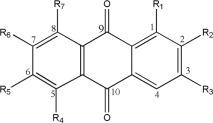当前位置:
X-MOL 学术
›
Biotechnol. Adv.
›
论文详情
Our official English website, www.x-mol.net, welcomes your feedback! (Note: you will need to create a separate account there.)
New opportunities and perspectives on biosynthesis and bioactivities of secondary metabolites from Aloe vera
Biotechnology Advances ( IF 12.1 ) Pub Date : 2024-02-21 , DOI: 10.1016/j.biotechadv.2024.108325 Mrudulakumari Vasudevan Ushasree 1 , Qi Jia 2 , Seon Gil Do 3 , Eun Yeol Lee 1
Biotechnology Advances ( IF 12.1 ) Pub Date : 2024-02-21 , DOI: 10.1016/j.biotechadv.2024.108325 Mrudulakumari Vasudevan Ushasree 1 , Qi Jia 2 , Seon Gil Do 3 , Eun Yeol Lee 1
Affiliation

|
Historically, the genus Aloe has been an indispensable part of both traditional and modern medicine. Decades of intensive research have unveiled the major bioactive secondary metabolites of this plant. Recent pandemic outbreaks have revitalized curiosity in aloe metabolites, as they have proven pharmacokinetic profiles and repurposable chemical space. However, the structural complexity of these metabolites has hindered scientific advances in the chemical synthesis of these compounds. Multi-omics research interventions have transformed aloe research by providing insights into the biosynthesis of many of these compounds, for example, aloesone, aloenin, noreugenin, aloin, saponins, and carotenoids. Here, we summarize the biological activities of major aloe secondary metabolites with a focus on their mechanism of action. We also highlight the recent advances in decoding the aloe metabolite biosynthetic pathways and enzymatic machinery linked with these pathways. Proof-of-concept studies on , whole-cell, and microbial synthesis of aloe compounds have also been briefed. Research initiatives on the structural modification of various aloe metabolites to expand their chemical space and activity are detailed. Further, the technological limitations, patent status, and prospects of aloe secondary metabolites in biomedicine have been discussed.
中文翻译:

芦荟次生代谢产物生物合成和生物活性的新机遇和新视角
从历史上看,芦荟属一直是传统医学和现代医学不可或缺的一部分。数十年的深入研究揭示了这种植物的主要生物活性次生代谢物。最近的大流行爆发重新激发了人们对芦荟代谢物的好奇心,因为它们已被证明具有药代动力学特征和可重新利用的化学空间。然而,这些代谢物的结构复杂性阻碍了这些化合物化学合成的科学进步。多组学研究干预通过提供对许多这些化合物(例如芦荟酮、芦荟素、诺丁香素、芦荟素、皂苷和类胡萝卜素)的生物合成的见解,改变了芦荟研究。在这里,我们总结了主要芦荟次生代谢物的生物活性,重点关注其作用机制。我们还强调了解码芦荟代谢物生物合成途径和与这些途径相关的酶机制的最新进展。还介绍了芦荟化合物的全细胞和微生物合成的概念验证研究。详细介绍了各种芦荟代谢物的结构修饰以扩大其化学空间和活性的研究举措。此外,还讨论了芦荟次生代谢产物在生物医学中的技术限制、专利状况和前景。
更新日期:2024-02-21
中文翻译:

芦荟次生代谢产物生物合成和生物活性的新机遇和新视角
从历史上看,芦荟属一直是传统医学和现代医学不可或缺的一部分。数十年的深入研究揭示了这种植物的主要生物活性次生代谢物。最近的大流行爆发重新激发了人们对芦荟代谢物的好奇心,因为它们已被证明具有药代动力学特征和可重新利用的化学空间。然而,这些代谢物的结构复杂性阻碍了这些化合物化学合成的科学进步。多组学研究干预通过提供对许多这些化合物(例如芦荟酮、芦荟素、诺丁香素、芦荟素、皂苷和类胡萝卜素)的生物合成的见解,改变了芦荟研究。在这里,我们总结了主要芦荟次生代谢物的生物活性,重点关注其作用机制。我们还强调了解码芦荟代谢物生物合成途径和与这些途径相关的酶机制的最新进展。还介绍了芦荟化合物的全细胞和微生物合成的概念验证研究。详细介绍了各种芦荟代谢物的结构修饰以扩大其化学空间和活性的研究举措。此外,还讨论了芦荟次生代谢产物在生物医学中的技术限制、专利状况和前景。
















































 京公网安备 11010802027423号
京公网安备 11010802027423号